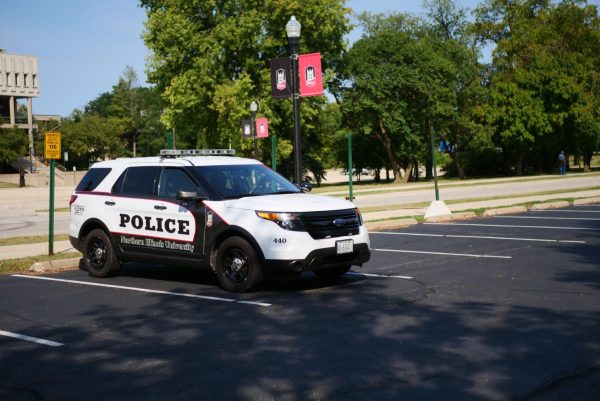NIU flushes copper
December 3, 2003
The copper content in NIU’s water is under control with temporary fixes, and permanent solutions are being studied, said Bob Albanese, director of NIU’s physical plant.
Albanese met with DeKalb public works personnel and a consulting firm Monday morning to develop a long-term plan to keep copper levels in the water below the Environmental Protection Agency limit.
The likely long-term solution is to change the ratio of additives to prevent corrosion of the copper piping, said Jerry Bever, assistant director of DeKalb public works.
Orthophosphates, which are already added to the water supply by the city, cause a microscopic film to develop on the pipes, which keeps much of the copper from entering the water supply, Bever said.
The city already adds a mixture of orthophosphates and polyphosphates to the water, but it will change the ratio to aid the development of the protective film.
“That takes a little time,” Bever said. “We’ll be changing the ratio gradually and monitoring the changes and making adjustments.”
The quick fix was to continuously run water through the system to flush out the copper.
“Over the long term, that’s not going to help us,” Albanese said. “It’s not good for energy conservation or for costs.”
However, over the winter break, water will continue to trickle through NIU’s pipes to prevent copper contamination, and come January, the water will still be safe to drink, Albanese said.
Adjusting the phosphate levels is not a perfect solution either, Bever said. Whatever public works adds to the water system must be removed eventually at the water treatment plant or be released into the Kishwaukee River.
Though phosphorous and nitrogen levels are not currently limited, limits may be introduced by the EPA in the near future to control a growing problem in the Gulf of Mexico and the Kishwaukee River, said Mike Zima, DeKalb Sanitary District manager.
Kishwaukee River water eventually empties into the Gulf of Mexico via the Mississippi River. There, Zima said, high levels of nitrogen and phosphorous are fueling algae blooms that, when they die and decompose, consume the oxygen available in the water.
The EPA has been seeking a solution and likely will limit phosphorous outflow in the next few years, Zima said.
The sanitary district currently must limit the copper it releases in the river so the river does not exceed environmental copper limits downstream. The river has exceeded maximum copper levels during the past five years, Zima said.
At this point, increased phosphorous levels would be a good trade-off for higher copper levels, Zima said.
Contributing to the copper levels could be the process the city has used since the last of its water-softening facilities came online in May 2001.
The $12 million water-softening project has, along with diluting radium-containing water, served its purpose, Bever said. The city has met EPA requirements since May 2001.
The softened water lacks dissolved solids, including radium, and becomes highly aggressive, Zima said. This could make the water more likely to eat away at the copper piping over a long period as it sits stagnant in NIU buildings.
This is what happened when copper levels of water tested at NIU had been as high as 2.5 milligrams per liter this fall. The EPA limits copper contamination to 1.3 milligrams per liter.
Bever said the city and NIU have tested the water in buildings on campus that use DeKalb water directly and those that soften the water further. They saw no difference in copper levels, Bever said, indicating the softening may not be a factor.












